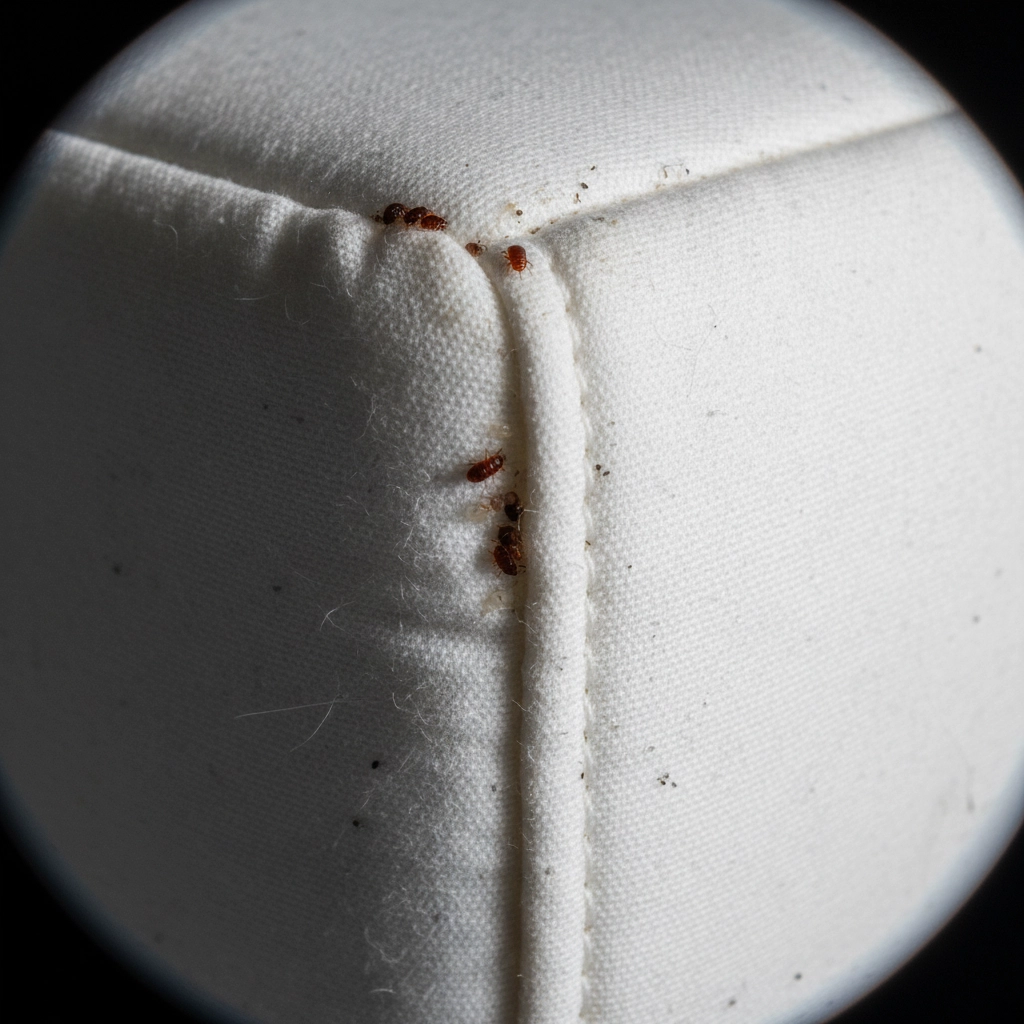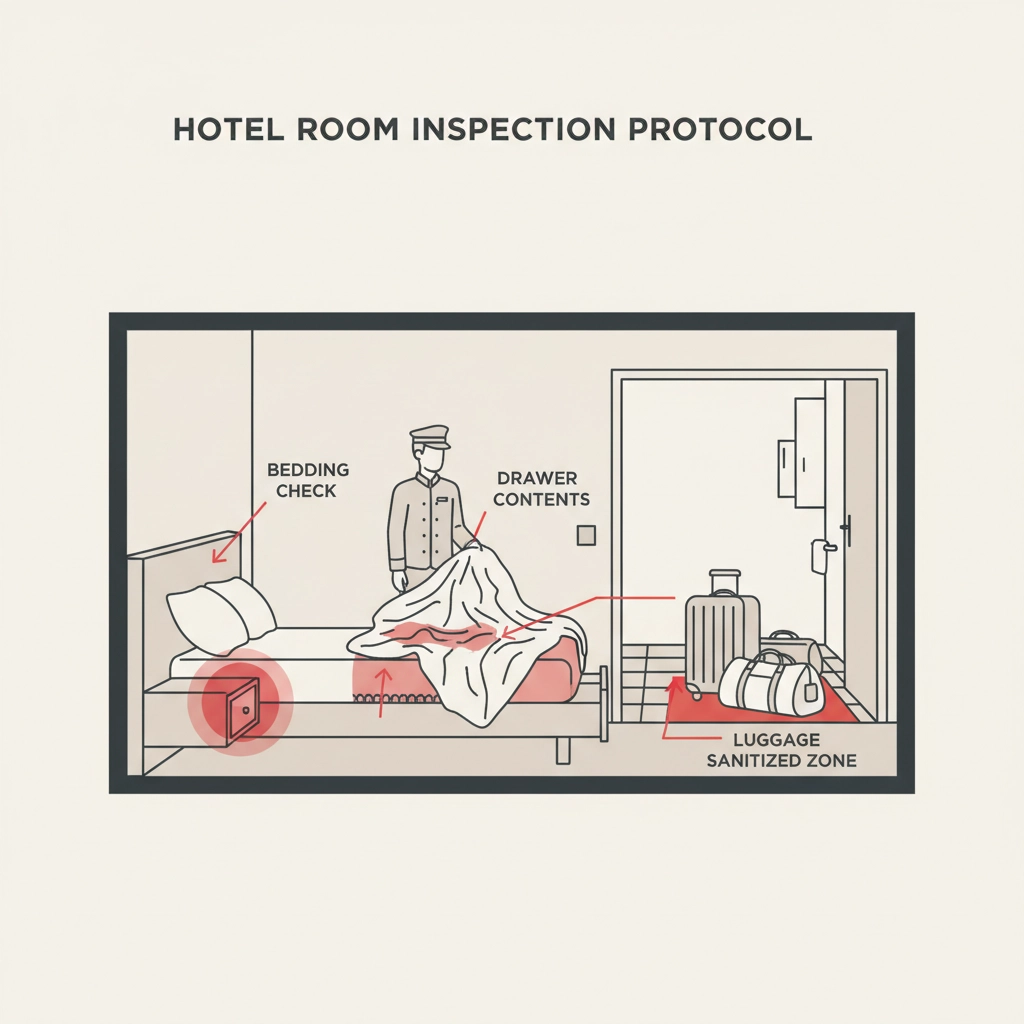Don't Let the Bedbugs Bite: A Simple Guide to Inspecting and Avoiding Bedbugs at Home and Away
- Targeted Wildlife and Pest Solutions

- Sep 26
- 5 min read
Bed bugs are among the most persistent and frustrating pests you can encounter. These tiny blood-feeding insects are masters of hiding, making early detection critical for preventing a minor problem from becoming a costly infestation. Whether you're protecting your Haliburton County home or staying in accommodations while traveling, knowing how to properly inspect for bed bugs can save you weeks of stress and expensive treatments.
Understanding the Bed Bug Threat
Bed bugs are small, brownish insects that feed exclusively on blood, primarily human blood. They're roughly the size of an apple seed when fully grown, but can flatten themselves to hide in incredibly small spaces. These nocturnal pests are excellent hitchhikers, easily traveling from place to place in luggage, clothing, and furniture.
The key to managing bed bugs lies in early detection. Once established, bed bug populations grow rapidly and become increasingly difficult to eliminate. A thorough inspection routine, both at home and while traveling, is your first line of defense against these unwanted invaders.

Essential Equipment for Effective Detection
Before beginning any bed bug inspection, gather the right tools to maximize your chances of spotting these elusive pests. You'll need a powerful flashlight and magnifying glass to examine dark crevices and identify small insects or stains. Keep plastic zippered bags handy for collecting any specimens you discover.
Create a probe using a credit card cut into a long triangle shape: this tool helps you check narrow spaces between mattress seams and furniture joints. Compressed air can flush bed bugs from tight hiding spots, while a screwdriver allows access to electrical switch cover plates for deeper inspection. Finally, keep alcohol, glass cleaner, or baby wipes available to test whether dark stains are actually bed bug droppings.
Recognizing the Signs
Bed bugs leave distinctive evidence of their presence that trained eyes can spot. Look for dark, pen-like spots or brown staining that indicates fecal material: these marks often appear along mattress seams and furniture edges. Blood spots on sheets frequently occur when bed bugs are crushed after feeding.
You might also discover rust-colored stains around mattress tufts and seams, which could be dried blood from previous feeding sessions. Keep an eye out for the actual insects, their shed skins, or small dark spots that might be eggs or additional fecal matter. A sweet, musty odor in heavily infested areas can also signal their presence.
Comprehensive Home Inspection Strategy
The Bedroom Focus
Start your inspection in the bedroom, where bed bugs are most likely to establish themselves. Begin with your mattress and box spring, examining all seams, tufts, and trim areas carefully. Check underneath the mattress and inspect every crack and crevice in the box spring framework.
Don't overlook the bed frame: examine all cracks, screw housings, and joints thoroughly. If possible, pull the headboard away from the wall to check behind it, as this area often harbors hidden populations.

Furniture and Storage Areas
Empty all nightstands, dressers, and wardrobes completely, removing drawers to inspect frames, joints, and screw holes. Bed bugs frequently hide in furniture that's close to sleeping areas, so examine chairs, couches, and ottomans with particular attention to tufts, seams, trim, and zippers.
Check the undersides and legs of upholstered furniture, as these areas provide ideal hiding spots that often go unnoticed during casual cleaning.
Walls and Structural Elements
Inspect any cracks in plaster or drywall, particularly around sleeping areas. Look behind peeling wallpaper or loose paneling where bed bugs might squeeze into small spaces. Check along baseboards, crown molding, and floor trim for gaps that could harbor insects.
Examine window and door frames along with their surrounding trim, as these structural elements often provide pathways for bed bugs moving between rooms.
Hidden Areas
Look inside smoke detectors, clocks, phones, and radios: bed bugs can squeeze into surprisingly small electronic devices. Check behind electrical outlet and switch face plates, but never insert anything into areas with exposed electrical wires.
Inspect picture frames, mirrors, and wall hangings by checking behind them and examining their mounting hardware. These decorative items often provide undisturbed hiding places.
Travel Inspection Protocol
When staying in hotels or rental properties, perform a quick but thorough inspection before settling in. Pull back sheets and carefully inspect mattress seams and the box spring for bed bugs, blood spots, and dark staining. Slide a card or piece of paper along the edge behind the headboard to check for hidden insects.
Open and inspect nightstand drawers before using them, as these furniture pieces are common bed bug hiding spots. Keep your luggage in the bathroom or on a hard surface away from beds and upholstered furniture while you complete your inspection.

Proven Prevention Strategies
Home Protection
Maintain a clutter-free bedroom to eliminate potential hiding spots and make inspections easier. Conduct regular vacuuming and cleaning of carpets and furniture, making sure to look behind and underneath items during your cleaning routine.
Check inside closets and drawers periodically, especially those near sleeping areas. Always inspect any secondhand furniture thoroughly before bringing it into your home: bed bugs can hide in used mattresses, couches, and bedroom furniture.
Travel Precautions
Always check luggage before and after travel to catch any hitchhiking bed bugs. When you return home, wash all clothes immediately and dry them on the hottest setting possible. This heat treatment effectively kills any bed bugs or eggs that may have attached to your belongings.
Consider using hard-shell luggage when possible, as it provides fewer hiding places than soft fabric suitcases. Keep luggage sealed in plastic bags during transport to prevent bed bug access.
Regular Monitoring Routine
Check sheets, pillows, and mattress corners regularly for fecal stains or other signs of activity. Monitor yourself for distinctive bite patterns, though remember that bites alone aren't definitive proof of bed bugs: many people don't react to bed bug bites at all.
Stay alert to early detection signs to catch potential infestations before they become severe. Regular monitoring is particularly important if you travel frequently or live in multi-unit housing where bed bugs can spread between units.
Professional Response to Infestations
If you discover evidence of bed bugs, contact a professional pest management company immediately for a comprehensive survey and treatment plan. Bed bug elimination typically requires multiple cycles of inspection, cleaning, and treatment using specialized equipment and techniques.
Professional expertise is essential because bed bugs hide in wall voids and extremely hard-to-reach crevices, making them among the most challenging pests for homeowners to eliminate completely. Attempting DIY treatments often spreads the infestation to other areas of your home.
Remember that successful bed bug management requires patience and persistence. Even professional treatments may need to be repeated to ensure complete elimination of all life stages, from eggs to adults.
The most effective approach to bed bug management is early detection through systematic inspection. By following these guidelines both at home and while traveling, you'll be well-equipped to spot these unwanted invaders before they establish a significant presence in your living space.
If you're dealing with a suspected bed bug problem in the Haliburton County area, don't hesitate to reach out to Targeted Wildlife and Pest Solutions for professional assessment and treatment options tailored to your specific situation.
Comments